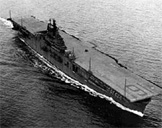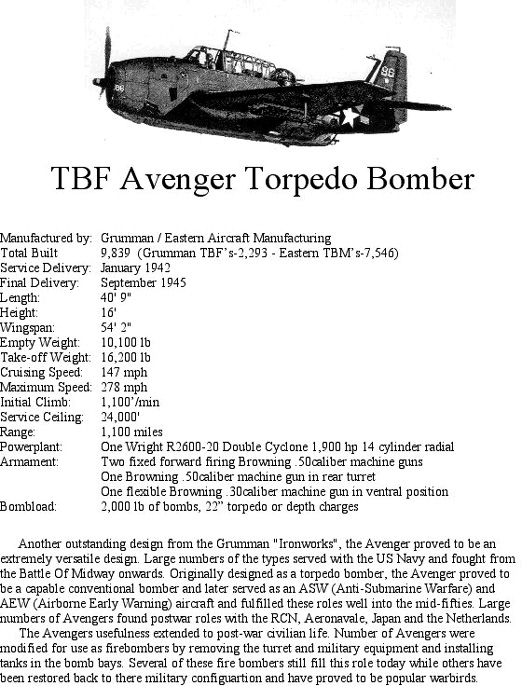 |
||||||
|
Fred Gwynn's |
 |
|||||
|
Page 1 of 5 QUONSET: THE DARKEST HOUR Carrier Aircraft Torpedo Bombing Squadron Sixteen operated for about a year and a half of the war, sometimes in the soup but most often in the gravy. We lasted twice as long as Torpedo 8 by being ten times luckier, and by riding the crest of the Navy's attack wave against Japan instead of the earlier storms of heroically frantic defense. Where the Coral Seas action saved Australia and the Battle of Midway saved Hawaii, we never were called upon to save anything. We always had the advantage over the enemy, and while I guess we never failed to retain it, we knew we had no stature comparable to the boys of 1942 who went charging around in decrepit TBD's to break the back of the actual Jap Fleet. We went home to wives and bars reasonably intact, with enough legitimate service ribbons not to be afraid of Army pilots, but we would have been the most decorated squadron in the Fleet if awards were made for such weird combinations as induced hard work and goldbricking, self esteem and paranoia, severe devotion to duty and sheer apathy. It's probably the same in every military unit, but you don't read much about it. Torpedo 16 got born on Saturday November 28, 1942 up at Quonset Point, Rhode Island. Quonset sits inland on Narragansett Bay, the bay being flanked seaward by Newport and Point Judith, comprising an ideal setup in summer, but a kind of Aleutian background for winter flying. Our noses ran faster and more often than the liberty buses to Providence.
Introducing the |
||||||
 |
||||||
|
Continuing the Story A VT Squadron has about thirty officers and fifty crewmen, but only six gentlemen and a handful of men had reported aboard in time to break the bottle in the commissioning ceremonies, the others still trying the break the bottlenecks of carrier landing qualification units or still being "accelerated" through technical training schools. The Commanding Officer was Lt.-Cdr. Robert H. Isely, who had been chafing through months of flight instructing at Pensacola and was anxious and excited at his chance to command an operating outfit and get back to active duty. Norman A. Steerie was his Executive Officer, a full lieutenant who had been through the life and death of the old Lexington as an ensign only six months before. The other four officers were j.g.'s - two pilots and two aviation specialists. Kent Cushman and Tom Durkin were, with Steerie, the only pilots we got who had seen carrier action, and we were damned lucky to have them as a nucleus. Cush had been all over three seas on the Wasp until he had to swim away from her one sad day, and Durk had just finished being rehabilitated from a Pacific trip on the gallant Enterprise and in a less gallant but more memorable rubber boat. Cushman was a man of stable character from Washington state, while Durkin had long ago discovered (possibly at Notre Dame) that he himself was a comic Irishman, and he didn't care who knew it. The two non-pilots were dependable gents. Edward Pendleton Stevens (somehow he kept his nickname "Bevo" quiet for four more months) was a New York lawyer via Princeton and Yale, a conscientious and merry Personnel Officer. Through a fortuitous oversight on the part of BuPers, the squadron had its Engineering Officer before its planes arrived; John Hull had been to Cornell and knew what to do with them when they came. The excellent enlisted men in the form of mechanics had also reported aboard - Larry DeNofio and Whitey Thomsen. Ten minutes after the ceremonies began they were joined by another mech, Jack Hamm, (who somehow wangled a ten days leave) and a radioman, Klingbiel. All had several years in the Navy, which was the Squadron's second break. Later in the week came two more pilots, both calm and capable and keystone material. Lee Witter, like Steerie, came from Minnesota, and had been an auditor when the Navy tapped him. Tom Bronn had been right out of junior college in California. Except for John Hull, all of the officers and men were married, which doubtless gave a certain steadiness to the squadron's foundation. It was nearly a month before any torpedo planes showed up, so the charter members of Torpedo 16 spent December doing their Christmas shopping, putting out squadron orders, and securing every day after lunch. Meanwhile personnel were flowing in. John Bowen and Roy Armstrong were both lieutenants and former instructors at Corpus Christi; Roc Curry had been teaching flying at Pensacola; Dick Scheele and Norm White were just out of training, Norm, overjoyed to have orders to Quonset, just thirty miles from his home and wife in Providence. Howard Pickard, a Phi Beta Kappa lawyer from Oklahoma via the AAA in Washington, had just finished Air Combat Intelligence School up the street, and was steeped in hot vicarious information. Pick handled the Intelligence and Communications, being an intelligent and educated man and didn't much care if he never saw the inside of a plane. End of Page 1 of Chapter 1 — Go to Page 2 Page — 1 — 2 — 3 — 4 — 5 — this chapter you may go to Introduction — Table of Contents Chapter — 1 — 2 — 3 — 4 — Epilogue — or Go to the Lexington Stories Cover Page Or Home - Contact Us - Cold War Hist. - 91st SRS Hist. - Stardust 40 Mission Story |
||||||